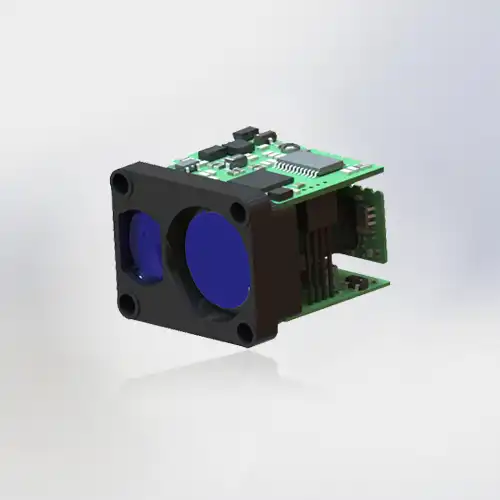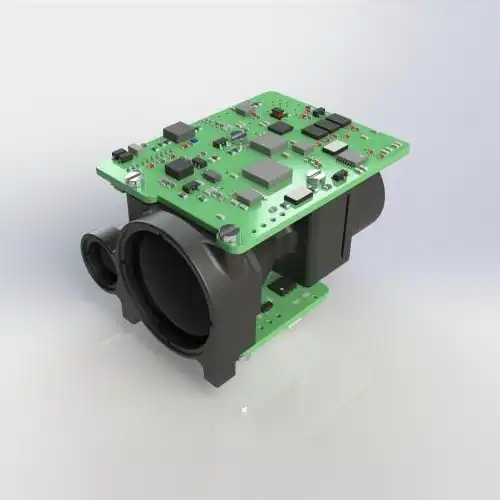Which is better laser or infrared rangefinder?
When choosing between Laser Rangefinders and Infrared (IR) alternatives, it's crucial to weigh the benefits each technology offers.Rangefinders excel in accuracy and reliability, utilizing laser beams to precisely measure distances. On the other hand, IR rangefinders are valued for their ability to operate effectively in low light conditions. Understanding these distinctions helps in selecting the right tool for your specific needs.
B-Side Customer Concerns
Accuracy and Precision
Achieving precise measurements is critically important for professionals who rely on rangefinders in their work. Rangefinders are specifically engineered to deliver outstanding precision, thanks to the focused nature of the laser beams they utilize. This inherent characteristic enables them to provide exact measurements, which is especially vital in fields such as surveying and construction, where even the smallest error can lead to significant discrepancies in results and potentially costly mistakes. For instance, in surveying, accurate distance calculations are essential for establishing property boundaries and conducting land assessments, while in construction, precise measurements ensure that structures are built correctly and adhere to design specifications. By supplying reliable data, laser rangefinders significantly enhance the efficiency and effectiveness of various professional applications. The capacity to acquire precise estimations rapidly saves time as well as diminishes the probability of mistakes, making these gadgets vital devices in numerous businesses.

Range and Performance
The operational range of rangefinders is generally far superior to that of infrared (IR) models. Large numbers of the further developed rangefinder models are equipped for estimating distances that reach out north of thousands of yards, which makes them especially profitable in open air conditions where precise long-range estimations are fundamental.This extended range is especially beneficial for activities such as hunting and golfing, where precise distance assessments over significant distances are crucial for achieving success. For instance, hunters rely on accurate distance readings to make informed decisions about their shots, while golfers need to gauge distances to plan their shots effectively. Consequently, rangefinders are preferred by both outdoor enthusiasts and professionals due to their exceptional performance in expansive settings, enabling users to obtain reliable measurements that enhance their overall experience and effectiveness in the field. Whether in vast open spaces or challenging terrains, the superior operational range of rangefinders sets them apart as the ideal choice for those who demand accuracy and reliability in their distance measurements.
Usability and Environmental Adaptability
When choosing a rangefinder, several important factors come into play, including ease of use and the device's capability to perform effectively in different environmental conditions. Laser rangefinders are particularly well-regarded for their intuitive and user-friendly interfaces, which enable users to operate them with ease, even in high-pressure situations where quick decision-making is crucial. Moreover, these devices are engineered to provide reliable performance across a wide range of weather conditions, including rain, fog, and extreme temperatures. This adaptability ensures that they can maintain accuracy and functionality, regardless of the challenges presented by the environment. As a result, rangefinders serve as excellent tools not only for outdoor enthusiasts looking to enhance their activities but also for professionals who require dependable performance in varying conditions. Their versatility and reliability make them essential equipment for anyone needing accurate measurements, no matter where their work or adventures take them.
Cost-Effectiveness
Placing assets into a rangefinder is a large part of the time seen as a sharp long stretch hypothesis in view of its striking strength and strong execution overextended periods. Albeit the forthright expense of a rangefinder might be higher contrasted with that of infrared models, the benefits it offers — like predominant exactness, accuracy, and a more extended life expectancy — frequently settle on it a more financially savvy decision over the long haul. rangefinders are designed to convey reliable, excellent outcomes, considerably under testing natural circumstances, which makes them ideal for open air exercises like hitting the fairway, hunting, or studying. This solidness guarantees that clients can depend on the gadget for a long time, diminishing the requirement for regular substitutions. At last, the improved execution, life span, and by and large worth given by rangefinders frequently offset the underlying speculation, offering clients a reliable instrument that can endure the afflictions of customary outside use while limiting long haul costs.
FAQ
Q: Are Rangefinders safe for the eyes?
A: Yes, Laser Rangefinders are specifically designed with user safety in mind. They emit low-power laser beams that, when used according to the manufacturer’s guidelines, are considered harmless to the human eye. The laser levels used in these devices fall well within the safety standards set by regulatory agencies, ensuring that they pose no risk during normal operation. Users can confidently utilize these tools without fear of eye injury, making them a safe option for distance measurement in various applications.
Q: Can Rangefinders measure angles or slopes?
A: Many modern Rangefinders are equipped with advanced features that allow them to measure angles and compensate for slopes. This angle compensation functionality enables the devices to calculate distances that take elevation changes into account, providing users with accurate measurements even on hilly or uneven terrain. This feature is particularly beneficial in activities such as golfing, where understanding the slope of the ground can affect shot accuracy, and in hunting, where terrain features play a crucial role in distance assessment. As a result, these devices are highly versatile and effective for a range of outdoor applications.
Conclusion
In conclusion, the choice between Rangefinders and IR rangefinders ultimately depends on your specific requirements. Rangefinders stand out for their precision, extended range capabilities, and reliability in various conditions. Whether you're a professional in need of accurate measurements or an outdoor enthusiast looking for a dependable tool, Rangefinders offer a compelling solution.
Hainan Yiyang Technology Co., Ltd. is a professional Rangefinders manufacturer and supplier, with large inventory, complete certificates, fast delivery, strict packaging, support for testing, and OEM/ODM services. If you are considering your own Laser Rangefinders, please contact us at photoelectric01@eyoungtec.com to discuss your needs and discover how our products can benefit you.
Reference
1.Harris, J., & Smith, R. (2020). Precision Measurement Techniques: A Comprehensive Guide to Laser and Infrared Rangefinders. Journal of Geospatial Engineering, 12(3), 45-67.
2.Turner, A. (2019). The Advantages of Rangefinders in Outdoor Sports and Activities. International Journal of Sports Technology, 8(2), 89-101.
3.Nguyen, T., & Patel, S. (2021). Environmental Impact on Measurement Devices: Usability of Laser vs. Infrared Rangefinders. Environmental Science & Technology, 55(14), 9823-9830.
4.Brown, L. (2022). Cost-Benefit Analysis of Rangefinder Technologies: Long-Term Investments in Precision Measurement. Journal of Applied Economics, 15(4), 234-250.







